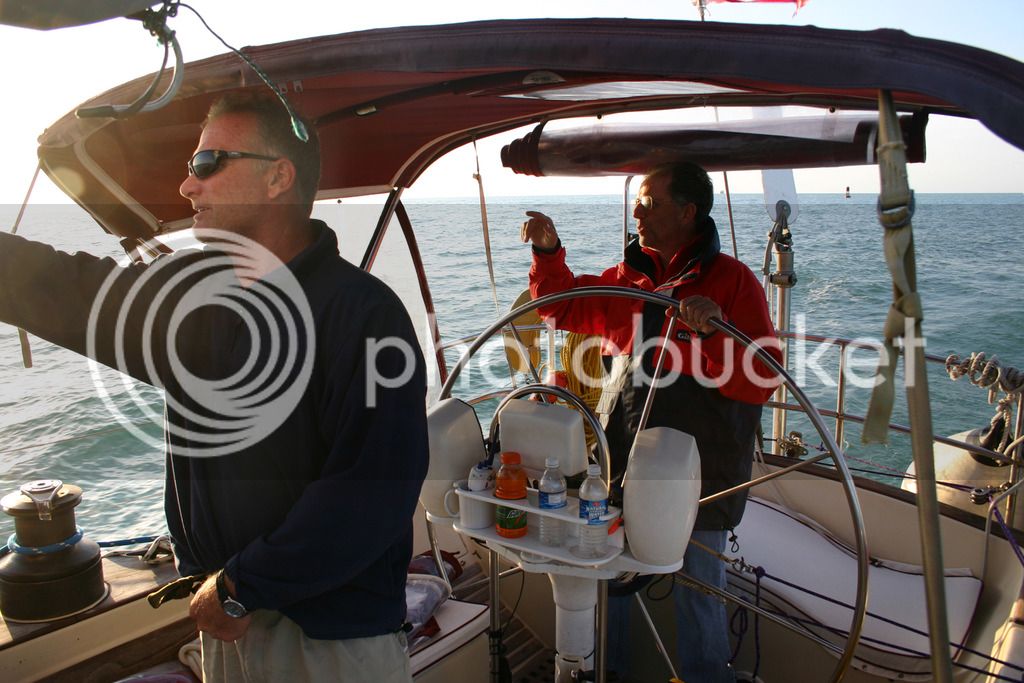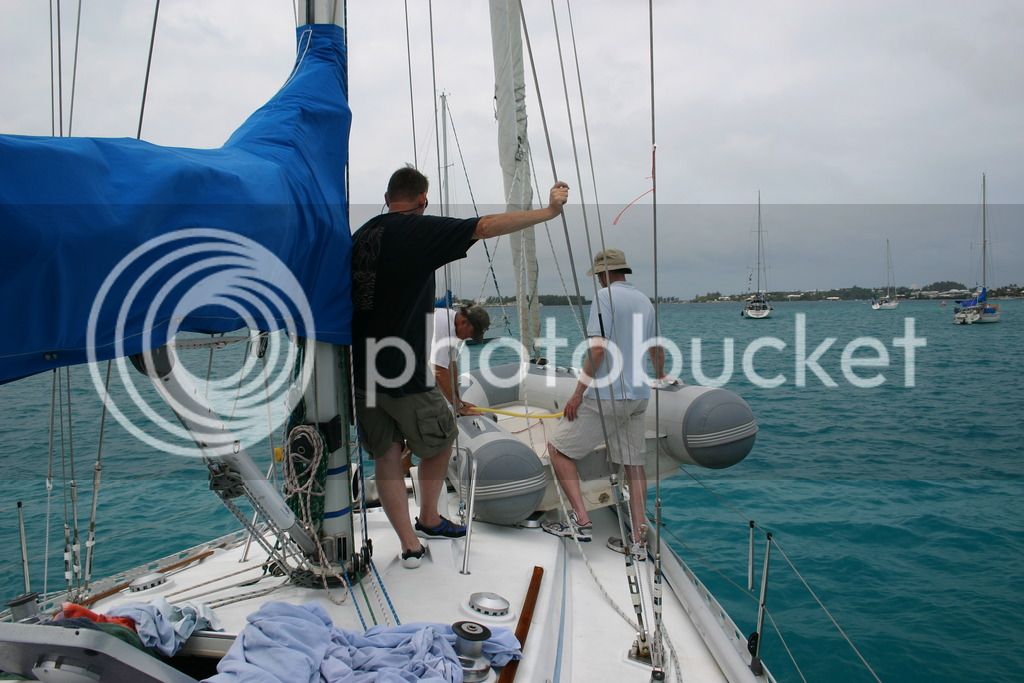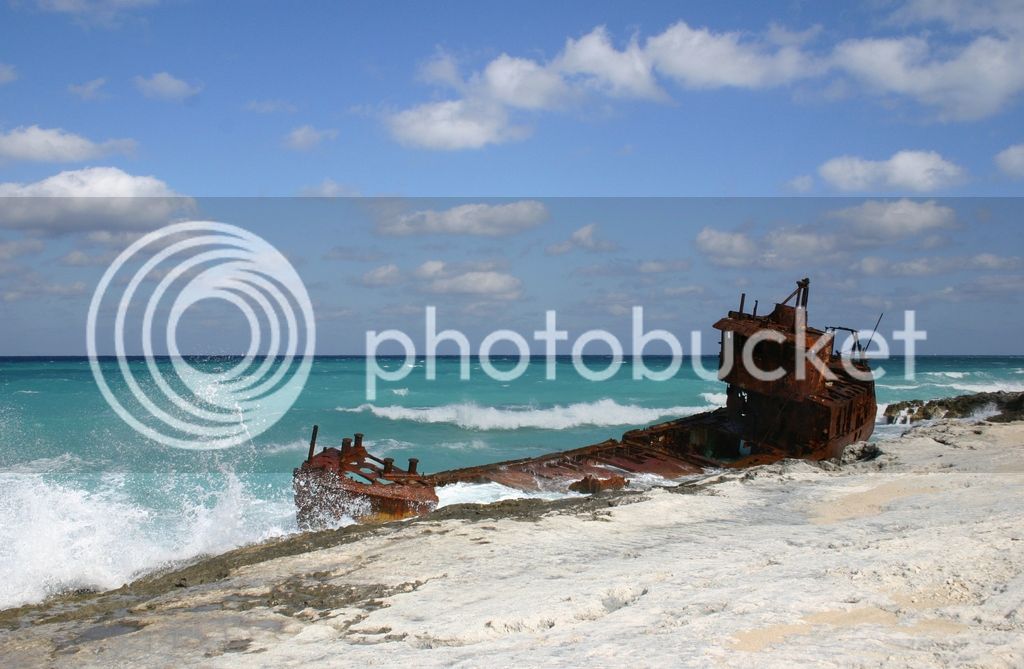Yes we are! Nothing like about 5 hours of sleep for a week of sailing. Just tell the wife I promise not to fall off the boat, which is actually hard to do.
More pics?

Yes we are! Nothing like about 5 hours of sleep for a week of sailing. Just tell the wife I promise not to fall off the boat, which is actually hard to do.
 Here is one with John Kretschmer on his boat,
Here is one with John Kretschmer on his boat,
 One with my friend Kevin on the way to Bermuda. Former Navy helicopter pilot who gets sea sick
One with my friend Kevin on the way to Bermuda. Former Navy helicopter pilot who gets sea sick
 One from when we were in Bermuda getting the dingy off
One from when we were in Bermuda getting the dingy off
 A few from Bimini in the Bahamas
A few from Bimini in the Bahamas



 Otto doing his job on the way from Ft Lauderdale to Solomon's Island Maryland.
Otto doing his job on the way from Ft Lauderdale to Solomon's Island Maryland.


I'm trying to determine if it is at all possible to brew beer while voyaging. I'm planning to spend 3 to 10 years voyaging on a trimaran in the various oceans of the world starting from the left coast. Here are the problems as I see them:
Boil safety:
The boil is the greatest hazard, and would require a brew kettle and burner that are secure. The kettle should be higher than normal for the volume, with the top portion narrowed to prevent hot wort from sloshing out. I'm imagining a custom built close fitting insert in a standard stock pot. The insert would be kind of like an inverted funnel shape. The process would be BIAB of course. No boil / no chill might be the best, using a "hop decoction". (thumbing my nose at the language gestapo again)
Logically the burner should be attached right to the boil kettle/mash tun, and the entire thing mounted in an assembly similar to the Sea Swing Stove though scaled up.
http://classiccampstoves.com/threads/optimus-45a-in-bremer-sea-swing.15673/
Keep brew sizes down to 2 or 3 gallons to make them manageable
Of course brew only in mild conditions. On a trimaran or cat sailing downwind in the trades, not pushing for max speed, the ride can be quite smooth.
Fermentation:
The fermenter would be a "steep conical" like the Fast Ferement (just bought one yesterday), to encourage trump to settle fairly tightly. It might need to be kept in a swinging mount......maybe.
Temp control will be a near impossibility, at least anything below seawater temperature. Seawater temp in Polynesia ranges from 86F to 89F, which means that yeast suitable to those temps is necessary, and/or a small 12 volt solar powered pump and a cloth jacket to give evaporative cooling. The salt build up would probably result in needing to wash the jacket every day. I would expect that with evaporative cooling it would be possible to maintain temps around 70 in a shaded location using a periodic squirt system of some sort. Belle Saison might be an ideal yeast for this, as I like the flavors it throws when fermented hot.
Material stowage. That is a simple matter for grain. Just break it down into suitable units and vacuum seal it with a food saver. Hops are just going to lose some of their potency unless they can be refrigerated, and that is a dubious proposition.
Material availability.......... a real problem. Panama City, Valparaiso, nothing I know of in French Polynesia, though there is a brewery in Papeete, and of course NZ and OZ both have home brew materials. Oz Brew in Darwin, so Darwin is a MUST STOP passing through the Torres Straits toward the Indian Ocean. Juan Brew located off the South Luzon Expressway south of Manila is a microbrewery and supply store, and the Philippines is a great cruising ground. HK Brewcraft in Hong Kong. Indonesia is kind of a loss cause, but there are two home brew stores in Singapore, and while it is illegal to home brew in Thailand, the fines are small and it's not enforced, and Thailand has 4 home brew stores, none of the websites list the locations, just phone numbers, so I assume that they operated sub rosa. Most of Africa outside of South Africa is a loss cause it would seem, so one had better stock up in Durban, or Capetown. Buenos Aries has at least one, but not Monte Video, and Brazil looks pretty empty. There is at least one in Puerto Rico, and no doubt an abundance of them in the European countries and the Med. And of course Scandinavia.
Brewing with unconventional materials.... sweet potatoes, Bananas & Plantains, both Taro and Breadfruit have been used in beer, as has Papaya, including roasted payaya seeds. The sap of a number of species of palm is sweet enough that it is fermented into palm wine, yielding about 4% ABV without concentrating it. Sugar and honey are available almost anywhere, and used with malt that has been mashed at a higher temp to make it less fermentable, along with some dark crystal can make a pretty decent beer.
The possibilities are endless. What is clear to me is that a goodly supply of amylase might be a Godsend.
So when I sail off into the 7 seas, does that mean I have to abandon home brewing? I think not. It means that I have to go to greater lengths and employ more imagination, and know in advance where the nearest homebrew store is. Realistically, as I will be sailing single or double handed, carrying enough malt to keep me supplied should not present much of a challenge. 100 pounds of two row, some crystal, and a couple pounds of hops will brew a lot of beer........... about 50 gallons without any adjuncts. At 2 pints a day that's 100 days of beer for 2 people. If a person can't stretch that out to 6 months by using creative adjuncts, he isn't much of a brewer!!
H.W.
DME + yeast of choice + battery powered tea kettle?
Bavarian DME and Weihenstephaner yeast makes for a decent weissbier and uses very little hops but that temp might be pushing it even though it likes it on the warm side. Granted if you enjoy saison you might like what it throws off at those temps.
















OK lets be honest..Passage making is a very small part of the cruising life style.. Just make beer in port or on the hook where most of your time is spent anyway and store up beer for passages...Maybe you could do it on a day like this but why?...for me its canned beer when underway on the boat...just to may things to go wrong and to many other projects anyway...Good luck
I don't think temp control would be a huge issue...... I don't know if you read my solution to temp control using evaporative cooling. A tiny pump would periodically wet a sleeve around the fermenter using seawater so it would keep cool just like that water bag my dad used to carry in the late 50's and early 60's when we traveled in the remote high desert regions of Eastern Oregon. The water in the bag was far cooler than air temp, though far from chilled.
H.W.
Well in that case I'd probably try what I mentioned if it were me. Bavarian DME, magnum hops, and some Weihenstephaner yeast. Small foot print, quick turnaround, very simple but pretty tasty. Just my thinking.

I haven't read the entire thread so please give me some leeway if this is a repeat.
Have you looked at Kveik yeast to brew without temperature control? Temperature range of 70° to 100°F.
I'm not sure I'd use a Belgian type yeast. I don't care for the strong clove flavors they throw when fermentation temp gets out of control. Of course pitching on top of the previous yeast cake so as to have a massive pitch would reduce the reproductive phase of the yeast enough that this probably would be minimized. On the other hand, I've let Belle Saison run wild, with fermentation temps exceeding 100F at times, and I like the flavors it throws under these circumstances.
It's been nearly 50 years since I've brewed an extract brew!! For me extract brewing takes the joy out of brewing. It also requires boiling. I'm currently about to make another foray into no boil / no chill, which is ideal for brewing aboard. It means that you can sterilize your wort in the pressure cooker in batches at about 170F for short periods of time, saving fuel, and increasing safety. A pint or so could be boiled with hops for a brief period of time, as in my most recent brew where I put all my hops in at 7 minutes (IBU about 48).
I plan to do a series of small brews next summer when temps are in the 90's indoors during the day, without any fermentation temp control using various yeasts and the same recipe. I already know that -05 doesn't handle high temps without leaving unpleasant flavors, and that Belle Saison does. Dry yeasts are the only options worth considering for a sea voyage, and that represents a fairly small selection.
H.W.
Weihenstephaner yeast is a German yeast for wheat beers. Great for top cropping. I tend to get more bubblegum and banana at higher temps but there is still a touch of clove. I was just throwing it out there because it handles the heat pretty well and has a lot of character.
On the extract front I get that it kills a lot of the fun. But it also makes "brewing" as simple as using a battery powered tea kettle to heat up a bit water to dissolve the DME in, then using regular temp water to top up the fermenter while simultaneously chilling the wort. You sound like you've got things figured out though.
This trip sounds awesome. I'd probably just skip the brewing and spend most of the time sailing around looking for beach bars. I'd get my beer there. There's nothing better than run down beach bar. (queue the Jimmy Buffet music.)
This trip sounds awesome. I'd probably just skip the brewing and spend most of the time sailing around looking for beach bars. I'd get my beer there. There's nothing better than run down beach bar. (queue the Jimmy Buffet music.)
This trip sounds awesome. I'd probably just skip the brewing and spend most of the time sailing around looking for beach bars. I'd get my beer there. There's nothing better than run down beach bar. (queue the Jimmy Buffet music.)
This trip sounds awesome. I'd probably just skip the brewing and spend most of the time sailing around looking for beach bars. I'd get my beer there. There's nothing better than run down beach bar. (queue the Jimmy Buffet music.)
This trip sounds awesome. I'd probably just skip the brewing and spend most of the time sailing around looking for beach bars. I'd get my beer there. There's nothing better than run down beach bar. (queue the Jimmy Buffet music.)
This trip sounds awesome. I'd probably just skip the brewing and spend most of the time sailing around looking for beach bars. I'd get my beer there. There's nothing better than run down beach bar. (queue the Jimmy Buffet music.)
The fermenter would be a "steep conical" like the Fast Ferement (just bought one yesterday), to encourage trump to settle fairly tightly.
I have to say... You owe me lots of money. I thought I was over the sailing bug. Now I need to go to therapy or start drinking lots more. If I could go, my dream boat would be a 42' catamaran. Anchored near you, drinking your beer.